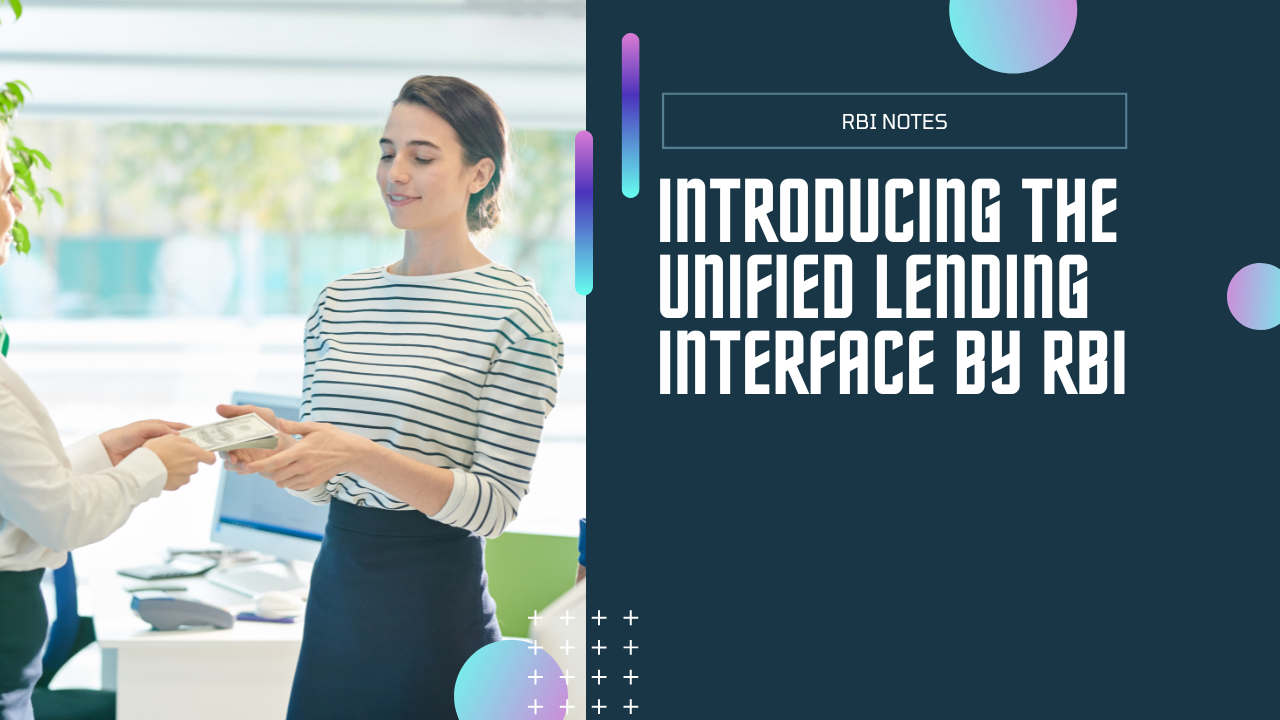The Reserve Bank of India (RBI) will soon launch the Unified Lending Interface (ULI) across the nation, with the aim of transforming India’s lending sector similarly to how the Unified Payments Interface (UPI) revolutionized the payments ecosystem. Governor Shaktikanta Das announced this during the Global Conference on Digital Public Infrastructure and Emerging Technologies.
Key Features of ULI
ULI will provide lenders with consent-based digital access to customers’ financial and non-financial data, including land records, stored across various silos. This initiative is particularly beneficial for farmers and micro, small, and medium enterprises (MSMEs), offering them frictionless credit.
Currently, the credit appraisal process is hindered by data being scattered across different entities, including central and state governments, local authorities, banks, and identity authorities. ULI aims to streamline this process by cutting down the time required for credit appraisal, especially for smaller and rural borrowers.
Digitalization and the ‘New Trinity’
Governor Das emphasized that the introduction of ULI is a continuation of the digitalization of banking services, following last year’s pilot of a technology platform for frictionless credit. He introduced the concept of the ‘new trinity’—JAM (Jan Dhan, Aadhaar, Mobile), UPI, and ULI—as a revolutionary step forward in India’s digital infrastructure journey.
ULI’s Technical Architecture
The ULI platform is built on a common and standardized API architecture, designed for a ‘plug and play’ approach. This design ensures seamless digital access to information from diverse sources, reducing the complexity of multiple technical integrations. As a result, borrowers can expect quicker credit delivery and reduced documentation requirements.
Central Bank Digital Currency (CBDC) and Cross-Border Payments
Governor Das also discussed the cautious approach to rolling out the Central Bank Digital Currency (CBDC), highlighting the need for comprehensive understanding through pilot projects before a full-scale launch. The retail pilot for CBDC, launched in 2022, now has over 5 million users and 16 participating banks.
Das pointed out that while wholesale cross-border markets have seen efficiency gains, retail cross-border transactions remain costly and slow. He suggested that the UPI system could evolve into a more affordable and quicker alternative for cross-border remittances, starting with small-value personal remittances.
India’s Digital Public Infrastructure (DPI)
Das lauded India’s Digital Public Infrastructure (DPI), which has enabled significant financial inclusion within a short span of time. India’s DPI is unique in that it is built, operated, and managed by the public sector, while the private sector leverages it to create innovative customer-facing services.
How ULI Will Benefit Borrowers
- Seamless Credit Appraisal: ULI will allow lenders to access customer data stored in different silos, facilitating quicker and more efficient credit appraisal, especially for smaller and rural borrowers.
- Standardized APIs: The platform’s common and standardized APIs ensure easy integration with diverse data sources, reducing the technical complexities involved in credit delivery.
- Support for Agricultural and MSME Borrowers: By digitizing access to financial and non-financial data, ULI is expected to address the large unmet demand for credit across various sectors, particularly agriculture and MSMEs.
The nationwide launch of ULI is poised to transform the lending landscape in India, offering a streamlined and efficient credit appraisal process. By integrating ULI with existing digital public infrastructure like JAM and UPI, the RBI aims to further enhance financial inclusion and digitalization in the country.
The introduction of ULI is particularly relevant for those preparing for the RBI Grade B exam. Understanding ULI’s impact on financial inclusion is important for mastering the RBI Grade B syllabus, and it’s crucial to stay updated on such advancements. Aspirants can expect to encounter questions on digital public infrastructure in the RBI Grade B exam pattern. Moreover, as part of your preparation for government job exams, keeping up with developments like ULI will help in interviews and discussions about the RBI’s role in transforming India’s financial landscape.


